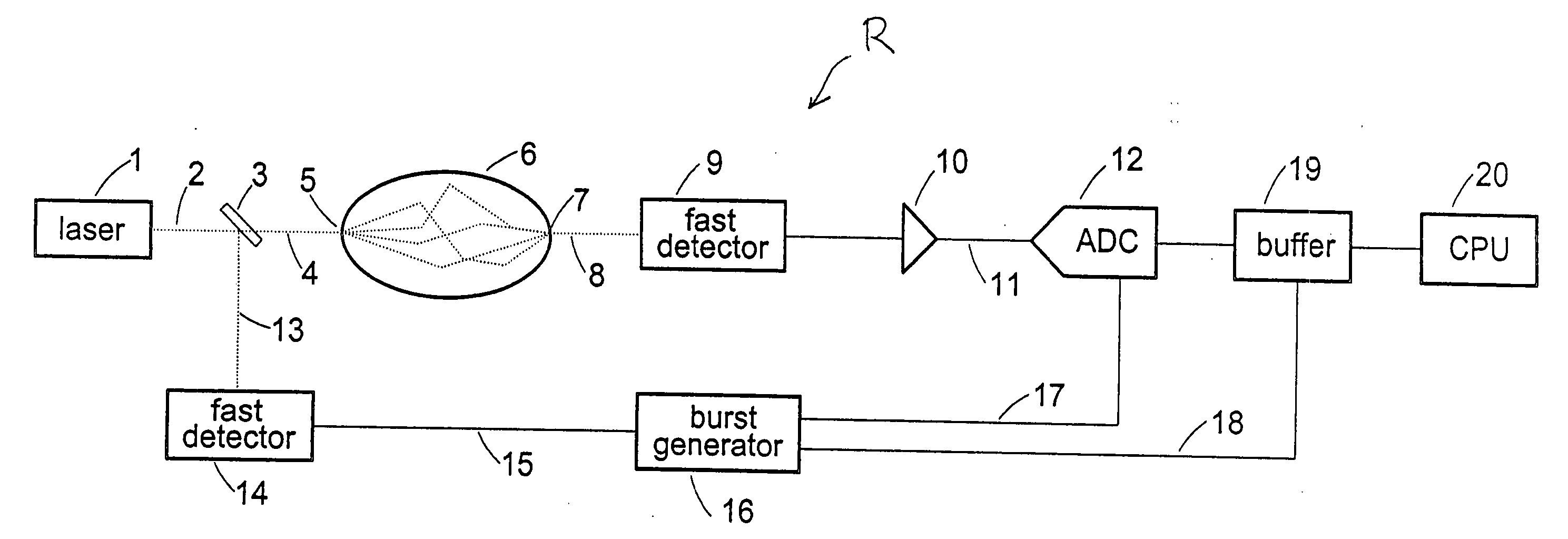Apparatus and method for acquiring time-resolved measurements utilizing direct digitization of the temporal point spread function of the detected light
a technology of temporal point spread function and time-resolved measurement, applied in the field of time-resolved optical imaging system, can solve the problems of 50 fundamentally inefficient approach, and 20 tpsfs to be sampled, and achieve the effect of reducing the time of data acquisition
- Summary
- Abstract
- Description
- Claims
- Application Information
AI Technical Summary
Benefits of technology
Problems solved by technology
Method used
Image
Examples
Embodiment Construction
[0034] Referring to FIG. 2, a time-resolved optical measurement system R made in accordance with the present invention is disclosed. A laser 1 produces extremely short, but intense, light pulses 2. Mode-locked Ti-Sapphire lasers have pulse widths in the sub-picosecond range and regeneratively-amplified mode-locked lasers have pulse widths, without compression, in the 10 s-100 s of picoseconds. Fast pulsed diode lasers can also achieve pulse widths well less than 1 nanosecond. The laser output 2 is a periodic light pulse, with pulse width in the femtosecond or picosecond range and repetition rates typically kilohertz to megahertz. A beamsplitter 3 sends most of the light as beam 4 to subject 6, as for example, a female breast. A small portion of the light is reflected as beam 13. Beam 4 enters the subject at location 5 and undergoes multiple scatterings and absorptions. A portion of the incident light ultimately exits the subject, for example at point 7, forming beam 8 and is detecte...
PUM
 Login to View More
Login to View More Abstract
Description
Claims
Application Information
 Login to View More
Login to View More - R&D
- Intellectual Property
- Life Sciences
- Materials
- Tech Scout
- Unparalleled Data Quality
- Higher Quality Content
- 60% Fewer Hallucinations
Browse by: Latest US Patents, China's latest patents, Technical Efficacy Thesaurus, Application Domain, Technology Topic, Popular Technical Reports.
© 2025 PatSnap. All rights reserved.Legal|Privacy policy|Modern Slavery Act Transparency Statement|Sitemap|About US| Contact US: help@patsnap.com



